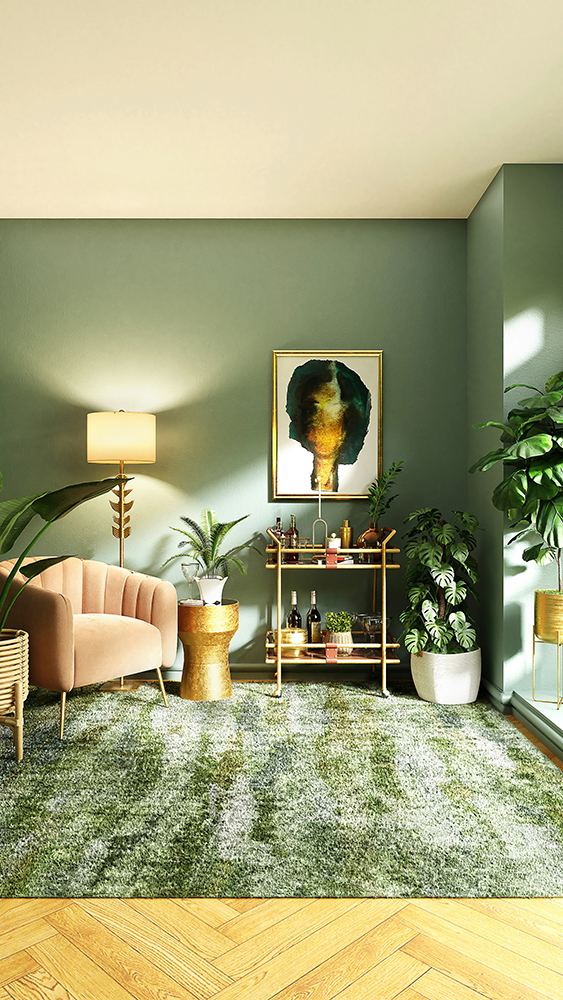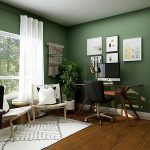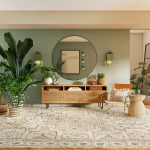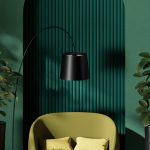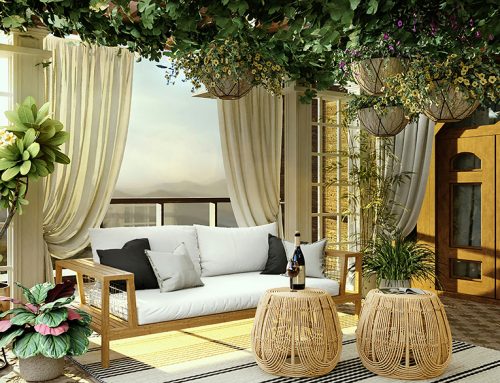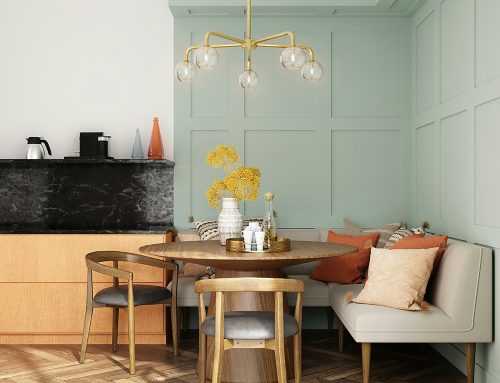One thing we can thank rainy weather for is so much greenery – so this week we’re going green for our home interior design schemes! Embracing a green colour palette in your home interior design is an excellent way to bring the tranquility and freshness of nature indoors. The versatility of green allows it to complement various styles, from modern and minimalist to rustic and traditional. Here’s a closer look at how to incorporate different shades of green into your home to create a cohesive and inviting space.
Understanding the different shades of green and their unique characteristics is crucial for creating a harmonious design. Here are some popular shades and how to use them effectively:
- Emerald Green: This rich, jewel-toned green adds a touch of luxury and sophistication to any room. Use it for statement pieces like a velvet sofa, accent walls, or bold accessories.
- Sage Green: A muted, grey-green hue that exudes calmness and serenity. Ideal for bedrooms and living rooms, sage green works well on walls, cabinetry, and textiles.
- Olive Green: This earthy green has warm undertones, making it perfect for creating a cozy, grounded atmosphere. Pair olive green with natural wood finishes and rustic decor for a cohesive look.
- Mint Green: A light, refreshing green that brings a sense of freshness and energy. Mint green is great for bathrooms, kitchens, and children’s rooms. It pairs well with white and light grey for a clean, modern aesthetic.
- Forest Green: A deep, dark green reminiscent of dense woodlands. Use forest green for dramatic, intimate spaces like dining rooms or home offices. It works well with gold accents and dark wood furniture.
One option is to opt for a monochromatic scheme – using different shades of green to create a layered, cohesive look. For example, pair sage green walls with olive green furniture and mint green accessories. This creates depth and interest while maintaining a harmonious palette.
Another option is to combine green with its complementary colour, red, for a bold and dynamic look. This doesn’t mean using bright red but rather incorporating subtle red or pink undertones. For instance, pair emerald green with blush pink accents for a chic, balanced design. (I know we sound mad, but you can thank us later!)
Alternatively, choose colours that are next to green on the colour wheel, such as blue and yellow. This creates a serene and visually pleasing palette. For example, combine mint green with soft blue and pale yellow for a fresh, airy feel.
Don’t forget about the power of accessories and accents. Green decor items such as vases, artwork, rugs, and cushions can add pops of colour without overwhelming the space. Choose pieces that complement your overall colour scheme and style.
Incorporating a green colour palette into your home interior design can transform your space into a serene, nature-inspired sanctuary. By understanding the different shades of green and how to use them, you can create a cohesive and visually appealing environment. Whether you opt for bold emerald accents or subtle sage tones, green is a versatile and timeless choice for any home.
Embrace the greenery trend and let the calming influence of nature enhance your living space. Happy decorating! 🌿

